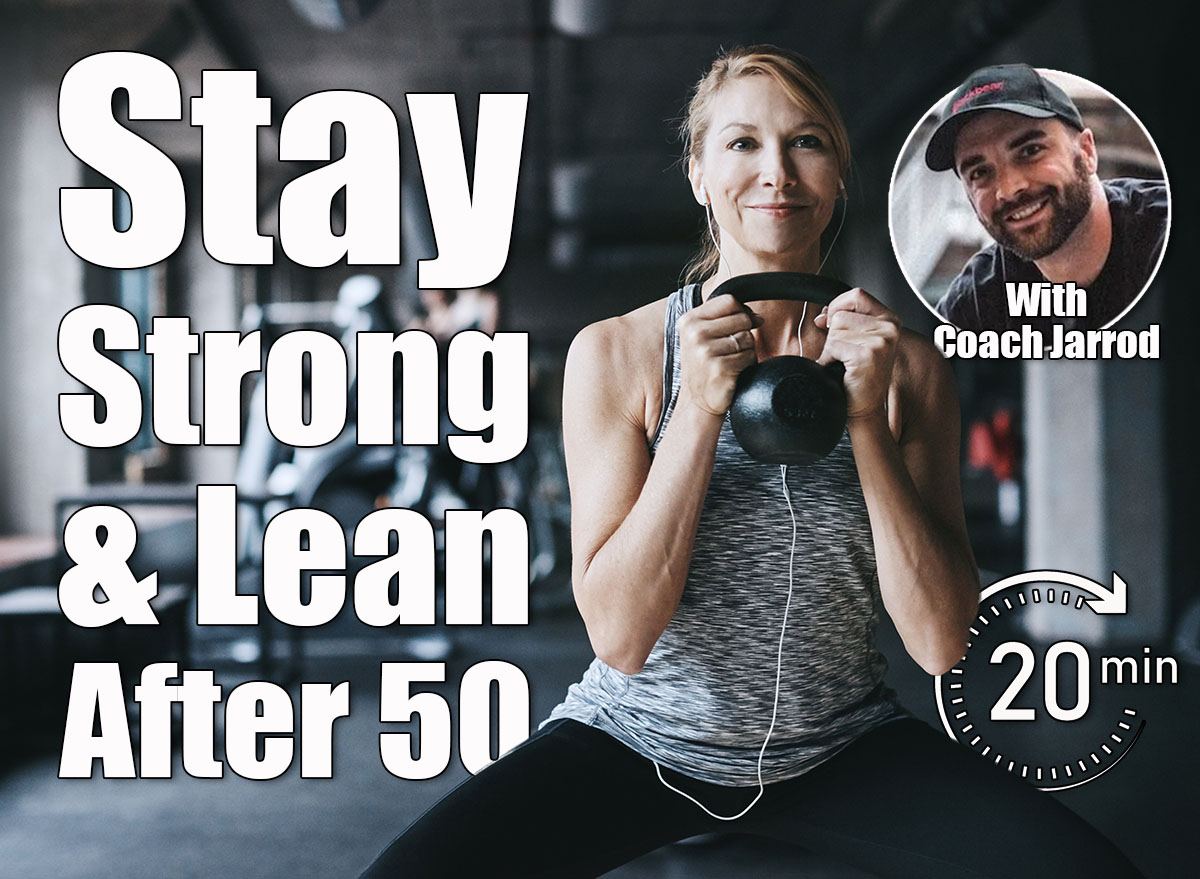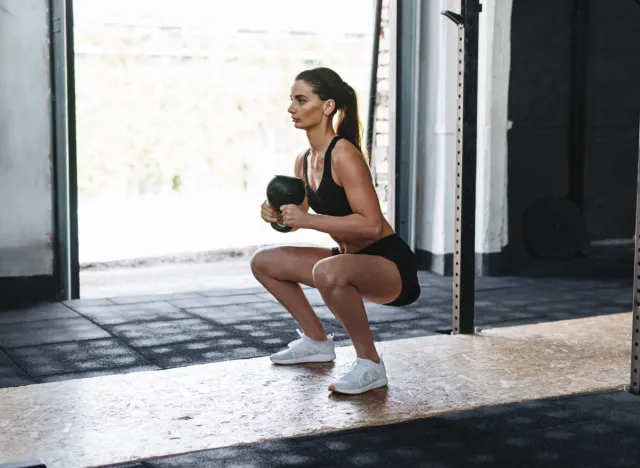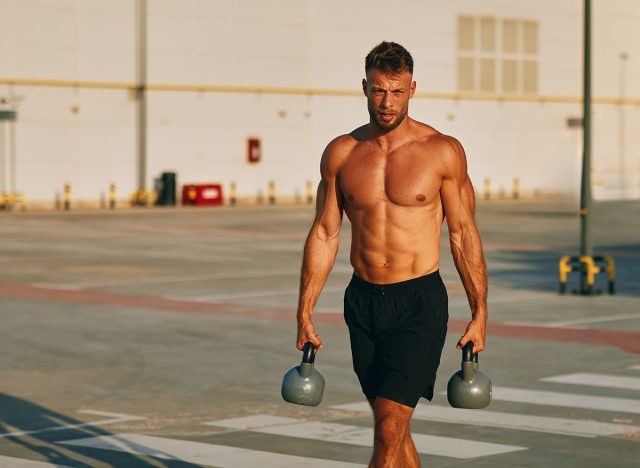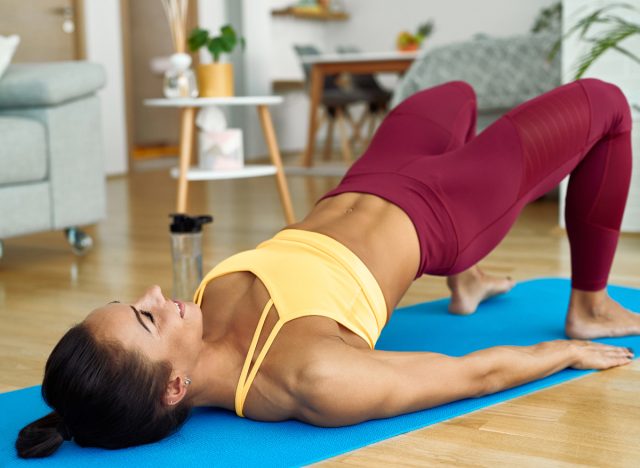4 Moves That Keep You Strong & Lean After 50

Your 50s can be one of the most powerful decades of your life, if you train with purpose. The key is shifting your workouts to support lean muscle, healthy joints, and long-term energy. You don’t need to crush high-intensity cardio or lift like you’re in your twenties. You just need to move smart and stay consistent.
The foundation of any solid fitness plan after the age of 50 is strength. Muscle mass naturally declines with age, but strength training helps you hold onto it. The more muscle you keep, the better your metabolism, posture, and overall function. Strong muscles protect your joints, support your balance, and help you maintain an active and independent lifestyle.
These four movements build real-world strength while allowing you to train hard without overexerting your body. They focus on large muscle groups, teach proper movement mechanics, and deliver excellent return on effort. Whether you’re training at home or in the gym, they provide the structure you need to feel leaner, stronger, and more capable.
Below, you’ll find a breakdown of each move, including why it matters, what muscles it targets, and exactly how to do it.
4 Moves to Stay Strong & Lean After 50
Move #1: Goblet Squats

Goblet squats build foundational lower-body strength while reinforcing posture, balance, and coordination. Holding the weight in front of your chest forces your core to engage and encourages an upright position, which protects the lower back. As one of the most transferable exercises to everyday life, it supports movements like sitting, standing, and getting in and out of a car.
Muscles Trained: Quadriceps, glutes, hamstrings, core, upper back
How to Do It
- Hold a dumbbell or kettlebell at chest height with both hands.
- Stand with your feet shoulder-width apart and brace your core.
- Lower your body into a squat by pushing your hips back and bending your knees.
- Keep your chest lifted and your elbows tucked in close to your sides, near your knees.
- Drive through your heels to return to a standing position.
Recommended Sets and Reps: Perform 3 to 4 sets of 8 to 12 reps. Rest for 60 seconds between sets.
Best Variations: Box goblet squats, Tempo goblet squats, Goblet squats with pause
Strength Tip: Slow your descent and maintain a tall posture through your spine to protect your back and engage your core more deeply.
Move #2: Incline Push-Ups
Incline push-ups target your upper body without the joint stress associated with standard floor push-ups or bench presses. The incline position decreases strain on the shoulders and wrists while still challenging your chest, arms, and core. This makes them ideal for maintaining upper-body strength and safely developing pushing power.
Muscles Trained: Chest, triceps, shoulders, core
How to Do It
- Place your hands on a sturdy bench, box, or countertop at shoulder-width.
- Step your feet back so your body forms a straight line from head to heels.
- Lower your chest toward the surface by bending your elbows.
- Press back up while keeping your body tight and straight.
- Avoid letting your hips drop or your shoulders shrug.
Recommended Sets and Reps: Perform 3 sets of 10 to 15 reps. Rest for 45 to 60 seconds between sets.
Best Variations: Wall push-ups, Knee push-ups, Decline push-ups (advanced), Close-grip push-ups
Strength Tip: Squeeze your glutes and brace your abs before each repetition to maintain proper form.
Move #3: Farmer’s Carries

Farmer’s carries are one of the most functional strength exercises you can do. They improve grip, build core and postural stability, and strengthen the muscles that protect your spine. Carrying heavy weight in your hands while walking reinforces control, resilience, and real-world readiness for everything from hauling groceries to lifting suitcases.
Muscles Trained: Forearms, shoulders, traps, core, glutes
How to Do It
- Stand tall with a dumbbell or kettlebell in each hand at your sides.
- Brace your core and pull your shoulder blades down and back.
- Walk forward in a straight line with short, deliberate steps.
- Maintain a tall posture without leaning or swaying.
- Walk for a set distance or time, then carefully set the weights down.
Recommended Sets and Reps: Perform 3 to 5 carries of 30 to 45 seconds. Rest for 60 seconds between sets.
Best Variations: Single-arm carries, Suitcase carries, Overhead carries (advanced)
Strength Tip: Breathe through your nose and keep your shoulders packed to protect your neck and improve stability.
Move #4: Glute Bridges

Glute bridges strengthen the posterior chain, specifically the glutes, hamstrings, and lower back, which is crucial for maintaining good posture, balance, and preventing injuries. Weak glutes are associated with back pain, limited mobility, and an increased risk of falls. Glute bridges restore that strength and are gentle on the spine and knees.
Muscles Trained
Glutes, hamstrings, lower back, core
How to Do It
- Lie on your back with your knees bent and feet flat on the floor.
- Place your arms at your sides with palms down.
- Press through your heels and contract your glutes to lift your hips.
- Pause at the top, forming a straight line from knees to shoulders.
- Lower your hips slowly and repeat.
Recommended Sets and Reps: Perform 3 sets of 10 to 15 reps. Rest for 45 to 60 seconds between sets.
Best Variations: Single-leg glute bridges, Banded glute bridges, Glute bridge holds, Hip thrusts
Strength Tip: Push through your heels and squeeze your glutes at the top for maximum activation.
Smart Strength Tips for Staying Lean After 50
After the age of 50, training smart is just as important as training hard. Your body responds best to workouts that focus on quality movement, consistent effort, and appropriate recovery. These tips will help you stay lean, strong, and injury-free for years to come.
- Prioritize muscle over mileage: Building and maintaining muscle has a greater impact on your metabolism and daily function than steady-state cardio. Muscles burn more calories at rest and support healthy aging.
- Lift with control and intent: Rushing through reps can lead to poor form and suboptimal results. Move deliberately and feel each muscle working.
- Focus on functional movement patterns: Mastering squats, hinges, pushes, pulls, and carries improves strength that carries into everyday life.
- Train two to four times per week: This frequency allows your body time to recover while still providing the necessary stimulus to build muscle and burn fat.
- Choose joint-friendly variations: Your workouts should challenge your muscles without straining your joints. Opt for exercises that feel good and build strength without causing pain.
- Recover like you train: Mobility work, quality sleep, and proper nutrition are essential for making progress. Recovery is not optional—it’s part of the plan.
References:
- Trombetti, A et al. “Age-associated declines in muscle mass, strength, power, and physical performance: impact on fear of falling and quality of life.” Osteoporosis international : a journal established as result of cooperation between the European Foundation for Osteoporosis and the National Osteoporosis Foundation of the USA vol. 27,2 (2016): 463-71. doi:10.1007/s00198-015-3236-5
- Jeong, Ui-Cheol et al. “The effects of gluteus muscle strengthening exercise and lumbar stabilization exercise on lumbar muscle strength and balance in chronic low back pain patients.” Journal of Physical Therapy Science, Vol. 27, No. 12 (2015): 3813-6. doi:10.1589/jpts. 27.3813